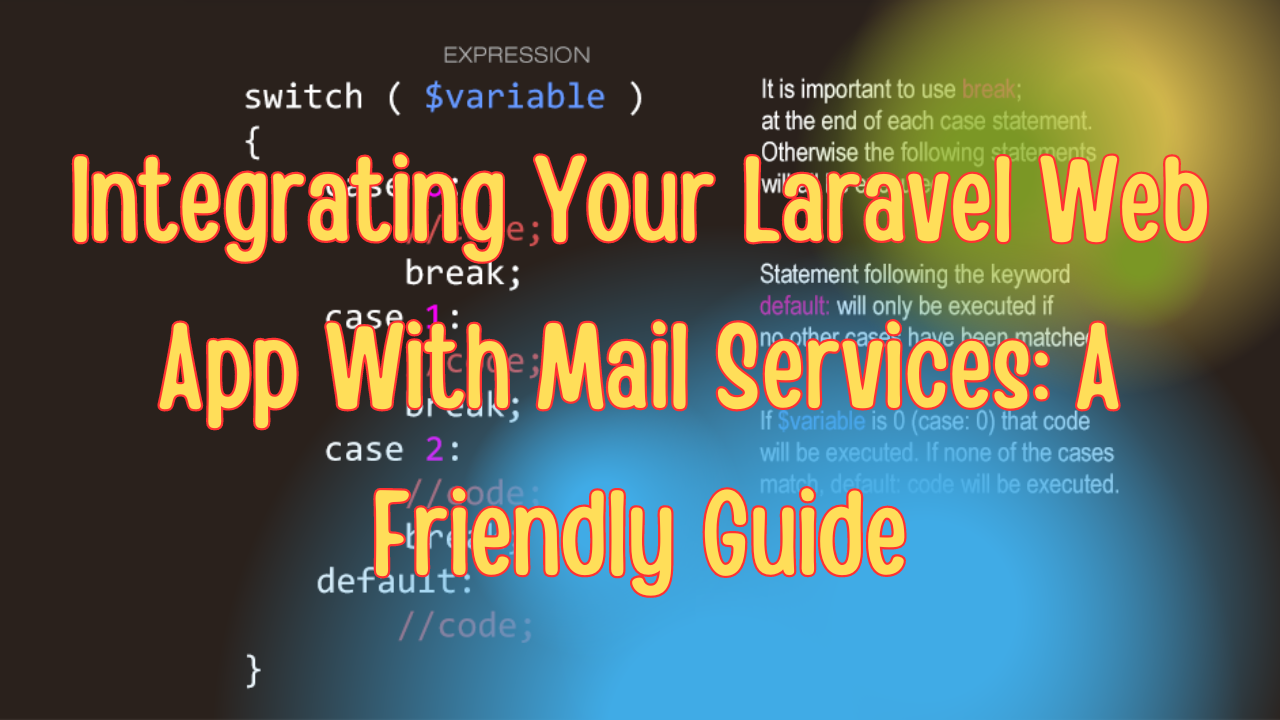So, you’ve built a shiny new Laravel web application—congrats! But now you’re thinking about sending out emails: maybe a welcome email to new users, notifications, or even a newsletter. You’re in luck because Laravel makes email integration a breeze. But before diving in, let’s take a friendly stroll through the process. Whether you’re a seasoned developer or just getting started, this guide will walk you through setting up and sending emails from your Laravel app.
Why Integrate Email Services?
First, let’s talk about why you should care about integrating email services into your Laravel app. Email is a crucial communication tool in almost every web app. Whether it’s for confirming user registrations, sending password reset links, or keeping users informed about their activity, reliable email functionality is a must.
Laravel comes with a built-in Mail class that allows you to send emails easily. But it gets even better—you can integrate with various email service providers like Gmail, SendGrid, Mailgun, and others to handle the heavy lifting for you. This ensures that your emails don’t end up in spam and can scale with your growing user base.
Step 1: Setting Up Your Mail Configuration
Laravel uses a configuration file located at config/mail.php to manage mail settings. To get started, open this file, and you’ll see something like this:
return [
'driver' => env('MAIL_MAILER', 'smtp'),
'host' => env('MAIL_HOST', 'smtp.mailgun.org'),
'port' => env('MAIL_PORT', 587),
'from' => [
'address' => env('MAIL_FROM_ADDRESS', 'hello@example.com'),
'name' => env('MAIL_FROM_NAME', 'Example'),
],
'encryption' => env('MAIL_ENCRYPTION', 'tls'),
'username' => env('MAIL_USERNAME'),
'password' => env('MAIL_PASSWORD'),
'timeout' => null,
'auth_mode' => null,
];
This might look a bit intimidating, but don’t worry—it’s straightforward! Laravel uses environment variables to keep sensitive information, like your email service credentials, out of your codebase.
Step 2: Choosing and Configuring Your Mail Service
Now, you’ll need to decide which email service provider you want to use. Here are a few popular options:
- Mailgun: Great for scaling and has solid documentation.
- SendGrid: Known for excellent deliverability and a free tier.
- Gmail: Easy to set up but limited on free sending limits.
- Amazon SES: A robust and cost-effective solution if you’re already in the AWS ecosystem.
Let’s take Mailgun as an example. After signing up and verifying your domain, you’ll get API credentials that you can plug into your .env file:
MAIL_MAILER=mailgun
MAIL_HOST=smtp.mailgun.org
MAIL_PORT=587
MAIL_USERNAME=your_mailgun_username
MAIL_PASSWORD=your_mailgun_password
MAIL_ENCRYPTION=tls
MAIL_FROM_ADDRESS=your_email@example.com
MAIL_FROM_NAME="${APP_NAME}"
After adding these credentials, Laravel will automatically use Mailgun to send your emails.
Step 3: Sending Your First Email
Now that everything is set up, let’s send an email! Laravel’s Mail facade makes it incredibly easy. Let’s say you want to send a welcome email to a new user.
First, create a Mailable class:
php artisan make:mail WelcomeEmail
This will generate a new file in app/Mail/WelcomeEmail.php. Open this file and customize it to your needs:
public function build()
{
return $this->view('emails.welcome')
->subject('Welcome to Our App!')
->with([
'name' => $this->user->name,
]);
}
Now, create a corresponding Blade view in resources/views/emails/welcome.blade.php:
<!DOCTYPE html>
<html>
<head>
<title>Welcome!</title>
</head>
<body>
<h1>Hello, {{ $name }}!</h1>
<p>Thank you for joining our awesome app. We're thrilled to have you!</p>
</body>
</html>
Finally, you can trigger this email from anywhere in your application, like after a user registers:
Mail::to($user->email)->send(new WelcomeEmail($user));
Step 4: Testing and Debugging
Before you go live, it’s always a good idea to test your email setup. Laravel provides an easy way to test emails locally using a service like Mailtrap. With Mailtrap, you can catch and inspect emails in a safe environment before sending them to real users.
Add Mailtrap’s credentials to your .env file:
MAIL_MAILER=smtp
MAIL_HOST=smtp.mailtrap.io
MAIL_PORT=2525
MAIL_USERNAME=your_mailtrap_username
MAIL_PASSWORD=your_mailtrap_password
MAIL_ENCRYPTION=null
Now, when you send an email, it will go to your Mailtrap inbox instead of a real user’s inbox. This way, you can ensure everything looks perfect.
Step 5: Advanced Usage and Scaling
As your app grows, you might want to send more complex emails, handle bounces, or manage large email campaigns. Laravel offers plenty of options here:
- Queues: Offload email sending to a queue to prevent delays in your app.
- Markdown Emails: Laravel provides a clean syntax for building email templates using Markdown.
- Event-Driven Emails: Send emails automatically based on specific events in your app.
The sky’s the limit!
Wrapping Up
Integrating email services into your Laravel app might seem daunting at first, but with Laravel’s intuitive tools and this guide, you’ll have it up and running in no time. Whether you’re sending a simple confirmation email or a complex newsletter, Laravel’s flexibility and power have got you covered.
Now, go ahead and start sending those emails—you’re all set! If you run into any issues or have questions, the Laravel community is a fantastic resource. Happy coding!




